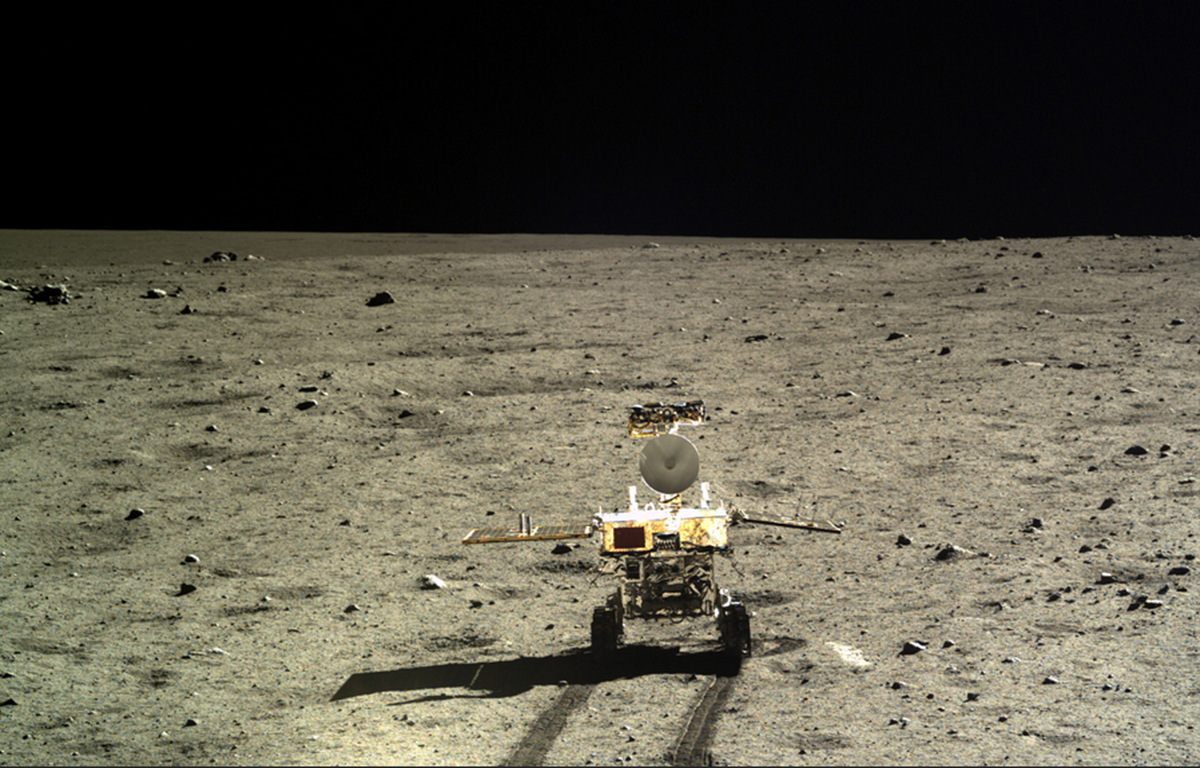China Moon Rover Survives Lunar Night, 'Stands a Chance' of Recovery

It's alive! … Sort of. Reports of the death of China's first moon rover, Yutu, have been greatly exaggerated, according to the country's state-run media.
The Yutu moon rover, which suffered a potentially serious mechanical malfunction last month, is now awake and has apparently survived its second lunar night, China's Xinhua news agency reported today (Feb. 13).
Scientists on the ground are still trying to pinpoint the problems that caused the rover's mechanical malfunctions, but Yutu (which translates to "Jade Rabbit") can now receive signals normally. [See photos from China's first moon rover]
"Yutu has come back to life," Xinhua reports Pei Zhaoyu, a representative with the moon mission, said today (Feb. 13).
"Now that it is still alive, the rover stands a chance of being saved," Pei said, according to Xinhua.
Yutu's mechanical problems arose as the rover entered its second lunar night in late January. The specifics of the error are unknown, however, some have speculated that lunar dust blocked Jade Rabbit's mechanisms from functioning properly as it entered hibernation on Jan. 25.
Chang'e 3, the moon lander that is currently on the lunar surface with Yutu, is reportedly up and running after emerging from its hibernation.
Get the Space.com Newsletter
Breaking space news, the latest updates on rocket launches, skywatching events and more!
Temperatures can vary wildly on the moon, and some scientists worried that the Jade Rabbit wouldn't be able to survive its second extremely cold 14-day lunar night due to the technical problems.
The Yutu rover and the Chang'e 3 lander are both solar powered, but carry plutonium-powered batteries for heaters to keep both probes warm during the harsh lunar night.
One day on the moon lasts 28 Earth days/nights. A lunar "day" is about two weeks long, and temperatures can be about 212 degrees Fahrenheit (100 degrees Celsius) during that time. During lunar night, temperatures can drop to minus 280 degrees F (minus 173 degrees C).
Chang'e 3 landed on the moon on Dec. 14, making China the third country to make a soft landing on the lunar surface. Just after the landing, the Yutu moon rover was deployed to explore the Mare Imbrium (Sea of Rains) where it landed. Chinese officials have said that the rover was expected to work for three months.
Yutu has already accomplished some science during its time roaming the moon's surface. The rover has already used its instruments to survey the lunar subsurface. The lander, built to function for one year, has observed Earth's plasmasphere and used a telescope to see other, far off objects in the universe.
Fans of Yutu got to send it well wishes on Sina Weibo, China's Twitter, according to Xinhua. The "Yutu Lunar Rover" account has posted updates about the mission since the rover touched down on the moon's surface, but it hadn't posted since the technical issues arose, the news agency added.
The rover's account posted a short message after the Jade Rabbit emerged from its sleep. "Hi, anybody there?" it asked, Xinhua reports.
The post got about 60,000 reposts and 40,000 comments in two hours, according to Xinhua.
Follow Miriam Kramer @mirikramer and Google+. Follow us @Spacedotcom, Facebook and Google+. Original article on Space.com.
Join our Space Forums to keep talking space on the latest missions, night sky and more! And if you have a news tip, correction or comment, let us know at: community@space.com.

Miriam Kramer joined Space.com as a Staff Writer in December 2012. Since then, she has floated in weightlessness on a zero-gravity flight, felt the pull of 4-Gs in a trainer aircraft and watched rockets soar into space from Florida and Virginia. She also served as Space.com's lead space entertainment reporter, and enjoys all aspects of space news, astronomy and commercial spaceflight. Miriam has also presented space stories during live interviews with Fox News and other TV and radio outlets. She originally hails from Knoxville, Tennessee where she and her family would take trips to dark spots on the outskirts of town to watch meteor showers every year. She loves to travel and one day hopes to see the northern lights in person. Miriam is currently a space reporter with Axios, writing the Axios Space newsletter. You can follow Miriam on Twitter.










